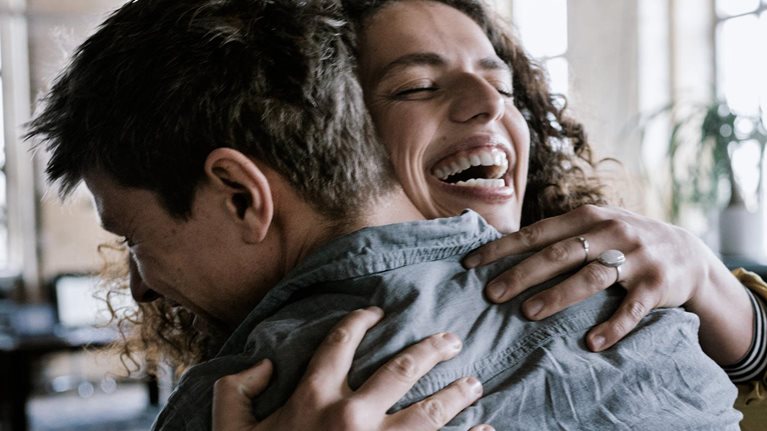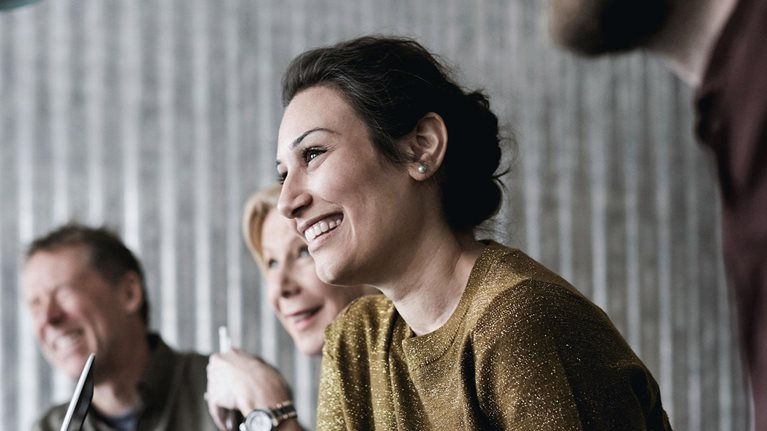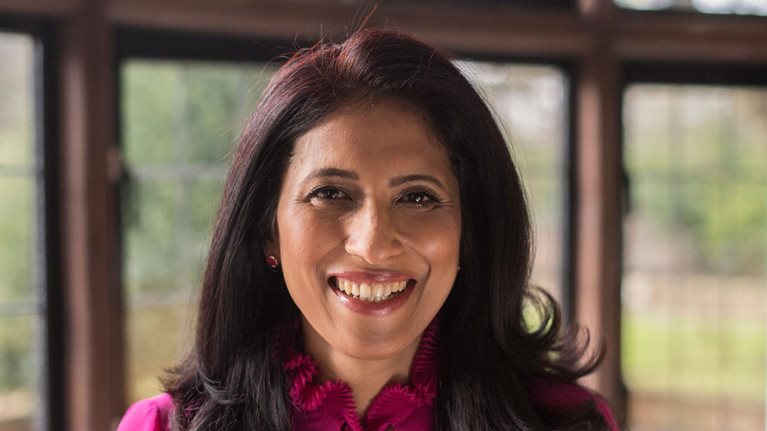The state of mental and behavioral health in America has been hit hard by the COVID-19 pandemic—with higher incidences of depression, substance abuse, and stress. A new report published by the Centers for Disease Control and Prevention (CDC) states that among over 10,000 US adults surveyed during the pandemic, parents, unpaid caregivers of adults, and parent-caregivers had significantly worse mental health than adults not in these types of roles.1 Members of the last group, parent-caregivers, handling both parent/guardian and adult-caregiving roles, were 12 times more likely to experience the most extreme of adverse mental health symptoms including serious suicidal thoughts.
The COVID-19 pandemic has seen a doubling in the number of unpaid caregivers, and changing demographic trends show that number will most likely continue to grow due to rising healthcare costs, an aging population, and couples delaying child rearing (causing people in their 20s and 30s to assume the caregiver role).2 Prepandemic, it was already estimated that unpaid caregivers were providing value to the US economy to the tune of $3.2 trillion.3 A more recent study pinned the spending of care-related activities as high as $648 billion, making it a larger economy than pharmaceuticals.4 The implications of this reality are an increased need for greater awareness and support for this critical cohort of the population.
Entrepreneur and national wellness expert Alexandra Drane has spent most of her career in the healthcare industry and has advised companies such as Prudential Financial and Walmart on omnichannel campaigns to support the health of their workforce and consumers—a vital and often-overlooked perspective. Over the past decade, her work has concentrated on the role of the caregiver and the impact of caregiving on individuals, organizations, and communities. As CEO of Archangels, her focus is on leveraging a data-driven engagement platform to reframe how caregivers are seen, honored, and supported to drive top- and bottom-line impact. “The COVID-19 pandemic has made almost all of us caregivers in some way,” she says. “Caregivers are the backbone of our country. They’re holding together our healthcare systems and our economy, all at the expense of their own time, mental health, and physical well-being.”
McKinsey partner Phyllis Rothschild recently caught up with Drane to ask about the state of unpaid caregivers in the wake of the COVID-19 pandemic and how employers can help address this crisis. An edited excerpt of their conversation follows.
McKinsey: What is the evolving challenge we see in America with regard to caregiving, and how has that shifted during the COVID-19 pandemic?
Alexandra Drane: While caregiving had a massive impact on people’s lives physically, emotionally, and financially before COVID-19, all of that has been exacerbated during the pandemic. The data show that at least 43 percent of US adults are unpaid caregivers right now—more than double prepandemic figures.5 But if you were to stop many of those caregivers on the street, that’s not the word they would use. They might say, “I’m just a daughter,” “I’m just a neighbor,” “I’m just a husband.” Many might associate the term “caregiver” with a doctor, nurse, or other paid health professional. Advocates in this space now use the term “unpaid caregiver,” but our research pre-COVID-19 showed 50 percent of unpaid caregivers had no idea what that meant or were confused by the term. For others, the idea of caregiving has a stigma associated with it or it reflects a role they feel uncomfortable acknowledging—a feeling that can be heightened for certain demographics and has been further exacerbated amid the pandemic.
Our work defines an unpaid caregiver as someone who is caring for someone else and helping in any way with their care, which can include picking up groceries, helping with schoolwork, mowing a lawn, managing finances—or the most common caregiver stereotype—taking a loved one to doctor’s appointments, or physically caring for their health. While it may be a foundational element to humanity to care for others and to be cared for ourselves, delivering that care can be intense, even more so during a pandemic, and that can have an impact on mental and behavioral health.
While recent years have shone a light on the role social determinants of health [SDOH] play in driving well-being,6 it is important to address the uniquely intersectional role unpaid caregiving plays in impacting all aspects of our lives. Many unpaid caregivers also suffer from financial stress, workplace stress, and relationship stress, and the COVID-19 crisis has heightened the intensity across each of these areas with added health and economic stress. Our challenge is to make sure our nation’s unpaid caregivers are supported in their SDOH while acknowledging the intersectionality and positive role this cohort plays in the nation’s economic and social well-being.
McKinsey: The COVID-19 pandemic has taken its toll on all of us. What does your research reveal on the impact of COVID-19 on unpaid caregivers more specifically?
Alexandra Drane: The restrictions imposed in response to COVID-19, including school closures and lockdowns, have laid bare the public-health challenges unfolding in the US. Unpaid caregivers have struggled to do their paid jobs while also trying to adequately fulfill the requirements of their role as an unpaid caregiver. It’s hard to do two jobs at once—for any of us—and for the most at risk and underserved in our nation, it can be that much harder.
Our most recent CDC survey taken during the pandemic7 reveals that up to 70 percent of unpaid caregivers have at least one mental health impact such as anxiety, depression, or trauma and stress-related disorder. An additional study demonstrates that the mental health impact is further exacerbated for caregivers who are Black, Hispanic, or Latinx, an essential worker, or between the ages of 18 through 248 [exhibit].

In addition, of the unpaid caregivers who are considered “sandwich generation” caregivers—those serving as a parent or guardian for one or more individuals under the age of 18 at the same time they are caring for one or more individuals over 18—a full 52 percent experienced “active suicidal ideation,” sometimes referred to as serious suicidal thoughts, in the month leading up to the survey. That means one in ten adults in the US who are sandwich-generation caregivers may be having active suicidal thoughts.
These figures are startling and hard to ignore. And that’s why we’re starting to see an unprecedented level of action to support this population [see sidebar “Characteristics of an unpaid caregiver during COVID-19”].
McKinsey: Given how important unpaid caregivers are in supporting society, who is best placed to address their needs and support them moving forward?
Alexandra Drane: To start with, all of us. But it’s difficult to support unpaid caregivers without identification and recognition of the role. Employers, health systems, and payers are a key access point for recognizing and supporting unpaid caregivers who are able to work or who have access to care and coverage. For the large number of unpaid caregivers forced to quit their jobs, or unable to take a job in the first place—especially true for younger caregivers—it becomes more difficult to provide easily accessible support.
For unemployed and unpaid caregivers, alternative mechanisms to fund support for and get access to this population should be considered. For example, we collaborate with the Ralph C. Wilson, Jr. Foundation in Detroit and Buffalo to do everything from working through faith-based organizations to working with respite services to raise awareness and utilization of support services. We also work with the state of New York to help individuals identify as caregivers and help them find the vast array of resources that exist. This in turn helps raise utilization and the ability to secure funding [see sidebar “How the state of New York supports unpaid caregivers”].
By providing opportunities to activate caregivers, to help them self-identify in the role, and by creating ecosystems across the spectrum of carers that are lush with caregiver recognition and support, there may be more opportunities to match existing resources with the unpaid caregivers who need them.
McKinsey: What is your wish list of actions that employers could be taking to better support this cohort of the population and improve the well-being of unpaid caregivers?
Alexandra Drane: Let me boil it down to my top three list right now.
- Recognize how vast this population is and the impact caregiving is having on our health. Caregivers are everywhere, and we don’t look like what you might expect. Are we a 46-year-old woman caring for her mom? Absolutely. We’re also younger, we’re men, we’re parents and grandkids and essential workers. There are a lot of us, and we’re feeling the weight of this role even more amid COVID-19. We are often some of your most valued workers—and we’re having a really hard time holding down our paid job while executing on this unpaid role.
-
Launch an awareness and engagement campaign to not just destigmatize and normalize but also honor and celebrate this workforce. For example, Henry Ford Health System launched an omnichannel awareness and engagement campaign for its employees, breaking down what it is to be an unpaid caregiver into recognizable tasks and making it aspirational. Examples included messaging on its home internet site, an email that went out from an executive, a flyer in the break room, and an employee resource group [ERG] that held a webinar on the subject. All combined, it drastically increased the number of unpaid caregivers that they’re engaging with and positively impacting.
Organizations can start by providing an assessment mechanism. We use the term “caregiver intensity” to measure and classify the impact on the individual and developed an index to measure that intensity [see sidebar “The Caregiver Intensity Index]. Unpaid caregivers with high levels of caregiver intensity tend to experience significantly elevated levels of mental health impacts. The tool helps to validate the reality for the unpaid caregiver and crosswalk them over to resources that most likely already exist within the organization, health plan, or health system. Most organizations offer employee-assistance programs and ERGs that provide services that are already being paid for and are available, but some workers aren’t aware of them. The issue for the vast majority of unpaid caregivers is they don’t see that they’re in that role, and employers don’t realize that they’re in that role. And yet, simply knowing respite services are available—even if never used—can lower stress by 70 percent.9
- Publicly recognize the skills an unpaid caregiver brings to the workforce. Get leaders across your organization, not just in the C-suite, to talk about it. Get them to share their own stories. Right out of the gate, that’s support. Unpaid caregivers who feel supported even by just one person have 40 percent lower risk of depression and 30 percent lower risk of anxiety.10 Better serving unpaid caregivers and leveraging their skill sets can have a direct and measurable top- and bottom-line impact and improve productivity across the organization. Compete to be the best caregiver employer in your region, your industry, and the country.
McKinsey: You mention how unpaid caregivers can develop valuable skills that are at times unseen or dismissed. How can these skills be better recognized in the labor market?
Alexandra Drane: Being a caregiver is a job, and it’s a job that results in invaluable skills. Creating a process for unpaid caregivers to speak to and get credit for the very real skills they have cultivated in this unpaid role can be a win–win for society. It can help create upward mobility for a talented workforce that can be largely invisible, undervalued, and underutilized at a time when employers are faced with a tight labor market11 and searching for the kind of talent an unpaid caregiver may exemplify. This type of experience-based hiring can provide employers access to a valuable and more diverse workforce that may otherwise not have been considered.
We recently launched Archangels Work free to the public to make it easier for unpaid caregivers to translate the skills they acquired through caregiving to the qualifications that employers across all types of businesses actively recruit. We are helping caregivers see the economic value in the skills they have honed while at the same time creating awareness among employers that those skills have great utility and value in the workplace. Employed caregivers can help drive culture change by showcasing these skill sets on their resumes and encouraging employers to recognize and appreciate those skill sets—and recruit for and promote them.
McKinsey: On a more personal note, how has the COVID-19 pandemic impacted your own ability as a leader and as an unpaid caregiver over the past year?
Alexandra Drane: One night in the summer of 2020, I had passive suicidal thoughts. At the time I had no idea that’s what it was called. I just felt worn. I was in a very active caregiver situation, and my caregiver intensity was high. I woke up one night at 3 a.m. and lay there reviewing all the ways I was failing: as a caregiver, as a mama, as a partner, and at work. And I just felt tired. And I found myself thinking, “You know—if I got COVID-19 right now and went to sleep and never woke up, I’d be OK with that.”
I did wake up the next morning and in time came to learn that feeling is called passive suicidal ideation. Our most recent CDC study pegs the rate of passive suicidal ideation for sandwich-generation caregivers at 58 percent.12 One interpretation of that data and my middle-of-the-night weary was just this: I was normal.
And sometimes feeling normal about something that makes you feel really alone, or even ashamed, is a way to start feeling better. The first line of care is knowing you are not alone.
It’s humbling to live your own data, even when you’ve dedicated 25 years to it. There truly is no more foundational element to humanity than to care for others and be cared for ourselves. When our ability to do that breaks down, there is also no greater risk to our ability to live our best lives. But therein lies the opportunity. Being a caregiver is a job, and like any job it has intensity. Seeing each other in that role and supporting each other through it is one of the greatest opportunities our nation has to truly recover—and not just from COVID-19.
This content is provided “as is” solely for informational purposes. It is not legal, health, or safety advice. Organizations should engage their own experts to ensure any adopted measures are compliant with applicable laws and standards in their jurisdictions. The opinions expressed by individuals or organizations are their own and do not reflect the views or opinions of McKinsey. References to specific products or organizations do not constitute any endorsement or recommendation by McKinsey.


